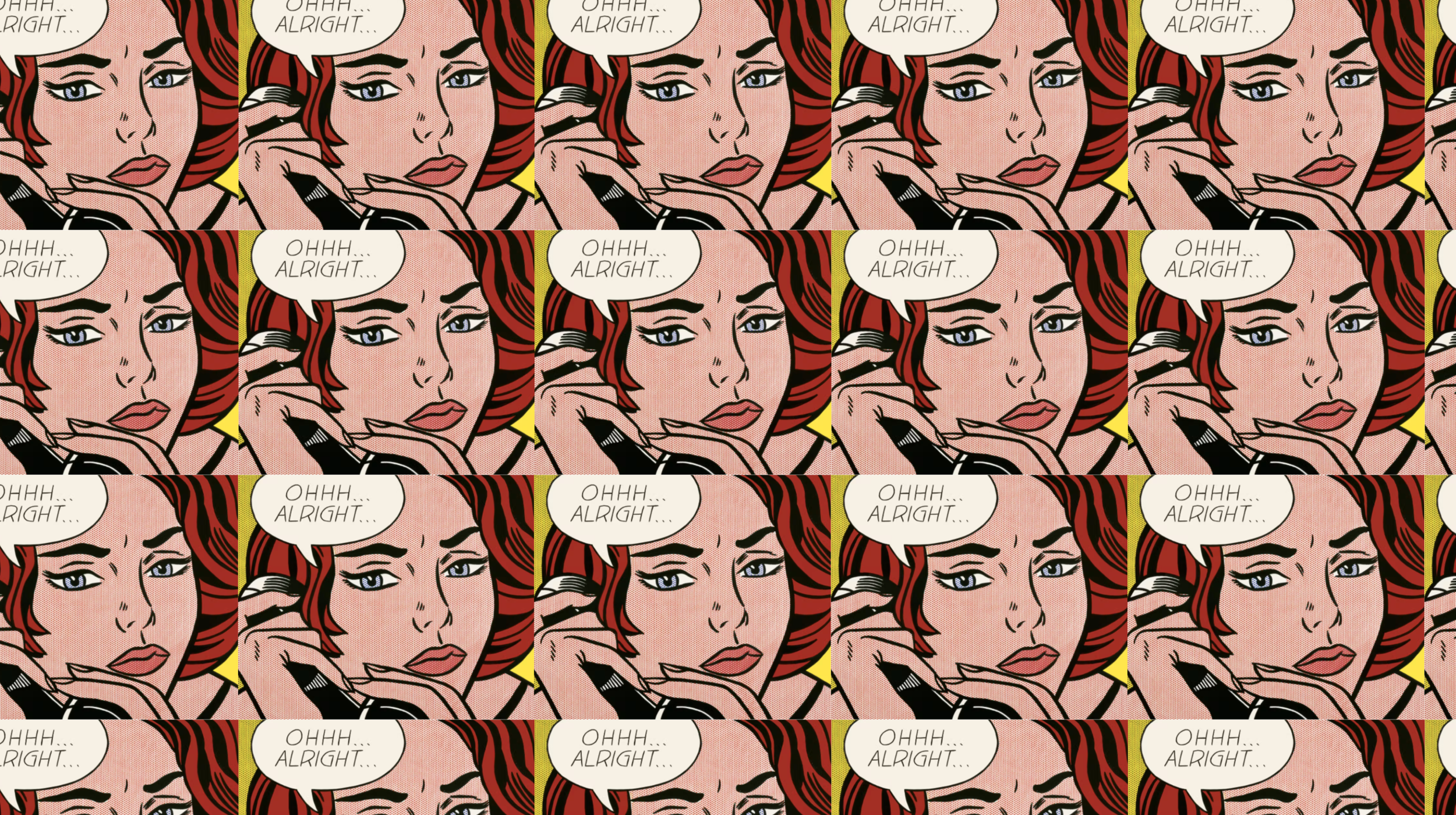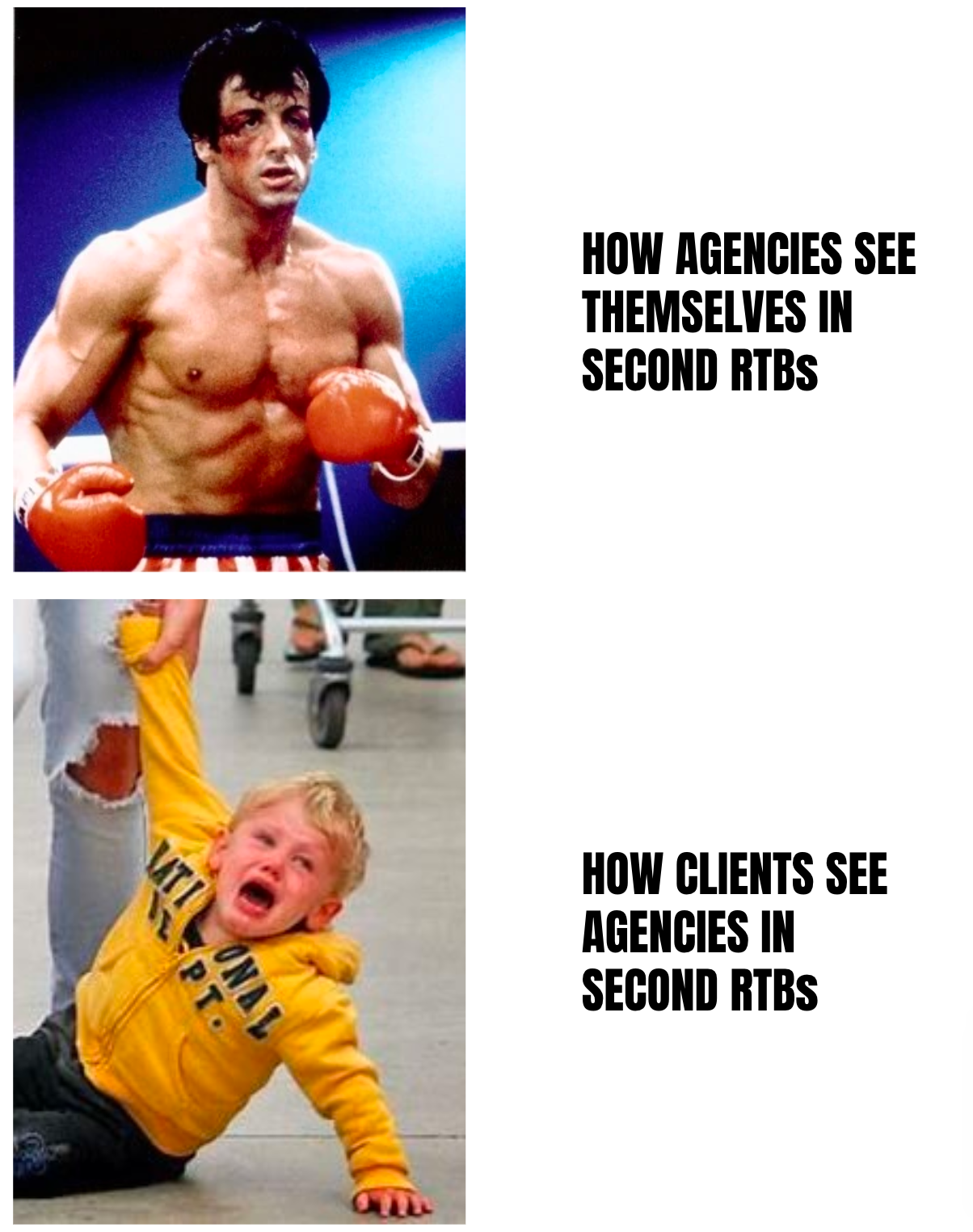
What your clients wish you knew... but will never tell you
Hannah Slapper
24/03/2022
Back at an agency after going client-side, Strategy Director Hannah Slapper has some tales to tell.
Most of us who start our careers in advertising stick at it until eventually heading off to become CEO of a VC-backed tech start-up, or founding a new agency and calling it something unhinged. (Note: Unhinged is a fantastic agency name)
However, some of us, myself included, go ‘clientside’. Heading into the thick of it. No longer advertising - now marketing. Suddenly at the epicentre of what makes the brand a brand. I challenge you to think of a bigger Zag?
And let me tell you, it’s an eye-opening experience.
Now that I’m back in agency life, I’m here to lift the curtain on what it’s like to be a client, and shed some light on what they think about their agencies.
BEHIND THE SCENES ON ‘BAD’ CLIENT BEHAVIOUR
Clients usually have the best intentions. You’re on the same team, with the same goal: to make fantastic work. But having been on both sides, I know that there are frustrating behaviours that crop up no matter the category.
But there are contexts to these common sticking points. Here’s the scoop, and what you can do to mitigate them.
The ‘Quick Turnaround’ - Given 48 hours to deliver a ‘topline’ answer to an actually very complex question? Are clients asking if you can ‘push’ on production times that are already tighter than Keira Knightley’s corset in that one scene in Pirates of the Caribbean? This usually means an extremely senior person has changed timelines with no notice, and your client has little control in this scenario. Don’t shoot the messenger – get your CEO to call their CMO and set some boundaries.
Short Term Memory Loss - Your middleweight senior client is most at risk of STML as they are pressured from both sides. Usually they have a chunky team to manage, plus directors breathing down their necks. They are time poor, accountability rich, with an unread inbox count to make you scream, cry and throw up. To avoid them asking for work you’ve already done or begging you to resend an email ‘to the top of their inbox’ you need to stay front of mind. Tricky. My advice is to just Be Unforgettable* in any way you can, from presentation style to email subject headings.
*Bagsy this for my eventual industry book title.
Vague Feedback - When a non-creative person is invited into the room to give feedback on agency work, it can get a tad subjective. If you’re being told that something doesn’t ‘feel right’, it means both sides need to work together to calibrate your response structure. Build yourself a robust feedback framework. Figure out if they need more, or less context. Learn the magic questions that unlock the answers to their thought process.
Stinky Briefs - Occasionally you will be asked to do something that seems so insanely counter-productive to the brand ambition. It’s simultaneously boring, time-intensive and needlessly complex. Chances are, this is something that has been passed through the ranks as a mandate from up top. No one wants to do it, so they use one of their major perks - they give it to the agency. The best way to avoid this is to get upstream with their brand planning - if you’re involved with, or have sight of, their priorities, targets, comms principles and more, you’ll have the power to push back.
Yes! No. - Pitched something to the client and they loved it? Only to be told 24 hours later that it’s not actually a goer? If a client is deck-teasing you, then usually there is some intense internal politics going on - often to do with who has budget, and who needs it. Plus some crossed wires on priorities. Try and go directly to the naysayer. Locate the blockade and work with them.
Creatively Craven - One of the most frustrating things is when a client wants brave work, but loses their nerve at the last second. Lily-livered clients are often accountable for so much that risks feel too big when it comes to the crunch. My advice? Use their own data to build your case for why they’ll lose out if they don’t use the brave work - it’s impossible to argue against your own charts when they tell a good story.
THE DOs AND DON’Ts OF A GOOD CLIENT PROMANCE*
*This is the term I’m coining for the perfect client-agency relationship
Let’s be real for a second - your clients aren’t the only ones with bad behaviours. It takes two to tango and, from the other side, I found that agencies really didn’t help themselves. Here are five things to avoid if you don’t want your clients eye-rolling off screen. And five things that will make them absolutely love you.
DON’T ignore client strat
As a marketing and brand strategist I was deeply amused by how often agencies would double up on work I’d already done. Client strategy and insight is in your brief for a reason - make sure you build and reinforce the work they’ve already done. Strategy should always be interrogated, but not undermined.
DON’T blow your own trumpet (once you’ve won the business).
Being a client often means being in back-to-back meetings all day. So when you waste 10 mins of a precious hour running through old work, work you’ve done for other clients, awards you’ve won, or things they knew from in your creds deck, you are infuriating them. You don’t have to continuously prove your worth - they’ve already hired you. It has the same feeling as when your date is banging on about their ex.
DON’T teach them to suck eggs
A male agency person speaking to a female client. A senior agency person talking to a junior client. An experienced agency person talking to a new client. There are many danger zones where, if you’re not careful, you can come across as extremely patronising. One thing I will say is that, despite having worked agency-side for my brand for years, I was astounded by how steep my learning curve was when I moved over. Within weeks my category knowledge had tripled. Your client’s knowledge will be more than you can fathom. Ask questions rather than offering advice.
DON’T double down
If your client asks you to ‘go again’ on strategy or creative and you all think that’s the wrong move, it can be tempting to just double your efforts on your beloved route. It’s a noble thought, but it can leave a bad taste in client mouths when timings are tight. Compromise here: when you come back for a second response, lead with their request and show them something new. But give yourselves room to compare it with your original idea and demonstrate its power.
DON’T integrate awkwardly
The ‘integrated response’ is a common client request. They need to understand how a campaign is going to work together - media, creative, PR, social etc. But it is patently obvious when agencies haven’t collaborated. Awkward decks with jarring formatting, dissonant recommendations, “whose slide is this?” in the meeting, and then a 200 page takeaway sent over with an appendix resembling Danielewski’s House of Leaves. When agencies do collaborate and work together, the result is notably better and you feel the warmth of their alignment.
DO find allies
There is an impulse agency-side to get as much time with the most senior clients you can. These are the decision makers, right? But do not dismiss your more junior clients. If they believe in you, and in your work, they can do a lot of hard graft behind the scenes defending or championing you. They can also give you inside scoops, context, advice on priorities and even magic buzzwords that could unlock budget. Share your WIP with them. Some of the best meetings I’ve been in are ones where all the clients know what’s coming and have already fed into the work.*
*Note to self: write a BBH Labs on why ‘Big Reveals’ are overrated.
DO practice brevity*
Clients are in meetings all day every day. It’s just the way of things. So keep things short and snappy. I suggest, where possible, a 50-30-20 rule.
50 word emails.
30 minute meetings.
20 slide decks.
Not always possible but, if you can - do.
*Do not @ me on the wordcount of this article.
DO help them to help you
Be an active participant in your promance by giving your client structure and guidance. Train them on giving good feedback and ensure there are thoughtful prompts and questions. Have detailed meeting agendas so they know what they are accountable for. Work together on the best briefing process. If you don’t do this, these things will happen on autopilot.*
*Like when you move into a new house and you unpack in a panic, dump all your cutlery in the first drawer you open and then four years later you are like…why is my cutlery in this deeply inconvenient drawer, I wish I had thought about this for even two seconds before making this decision, this has ruined my life.
DO use their data
It is hard to argue against a deck that uses your own brand tracking, NPS, sales figures, spontaneous awareness etc. as a way of selling in the strategy. Nothing thrilled me more than agencies using my own charts.
DO be nice
When you are stuck in trading or tech meetings all day, it’s no surprise that agency day is the best part of your job. You wear your best outfits. You get genuinely excited about it. And it’s even better when your agency seems to actually enjoy having you there. If they come sit with you, walk to Pret with you, have a chat or a drink with you. Clients are people too, and if you’re treated with snobbery, awkwardness – or, on the other extreme, deferential sycophancy – it can be pretty alienating. Get to know your clients; be teammates (even friends) and you’ll make great work together.
TL;DR
One side might be paying the other but, at the end of the day, you all want the same thing: great, effective work. The more space you give to your respective problems - whether that’s clients getting stuck in the spiral of their own internal politics, or agencies vying for better briefs - the more misaligned you’re going to become. Empathise, humanise and communicate, and you’ll have a promance for the ages.





